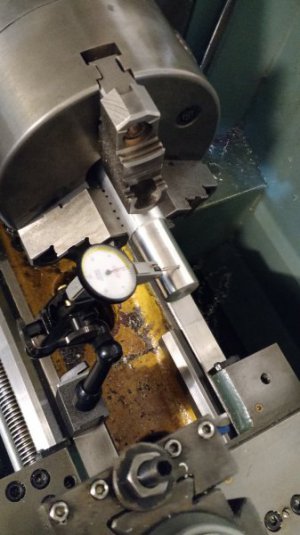- Joined
- Feb 1, 2015
- Messages
- 9,605
You have to be careful on what you choose as a standard for roundness, straightness, or cylindricity. Hardened drive shafts, for instance have a relatively poor tolerance spec. for straightness, somewhere around .002"/ft. Drill rod also has a rather poor tolerance for straightness.
I have run across dowel pins with a bend as well. A dowel pin is usually used to align two parts that are in close proximity to each other. Diametric tolerance is important but straightness isn't that important. I would expect pin gages to be fairly good but I have run into pins that are bent. They are precision ground for a specific diameter and straightness isn't even specified.
Note that although a tolerance spec. is loose or not specified doesn't mean that a pin, rod, shaft,etc. isn't straight. There is never an intent to make a crooked part aqnd some are going to turn out well within our needs. Just measure before use.
Trust but verify!
I have run across dowel pins with a bend as well. A dowel pin is usually used to align two parts that are in close proximity to each other. Diametric tolerance is important but straightness isn't that important. I would expect pin gages to be fairly good but I have run into pins that are bent. They are precision ground for a specific diameter and straightness isn't even specified.
Note that although a tolerance spec. is loose or not specified doesn't mean that a pin, rod, shaft,etc. isn't straight. There is never an intent to make a crooked part aqnd some are going to turn out well within our needs. Just measure before use.
Trust but verify!


